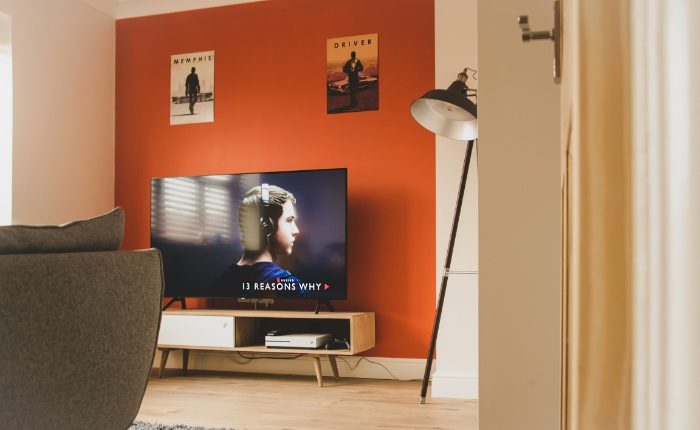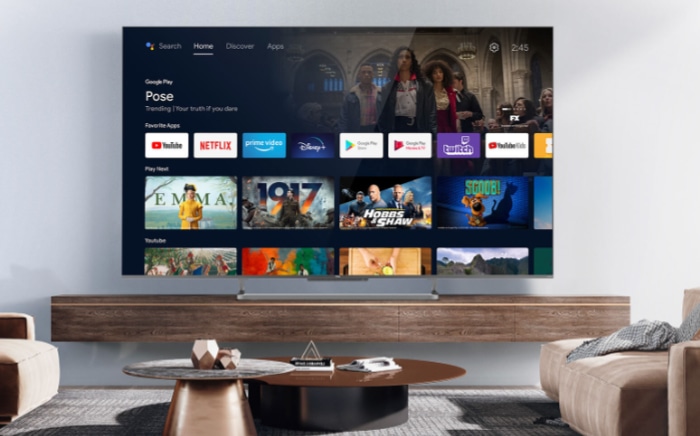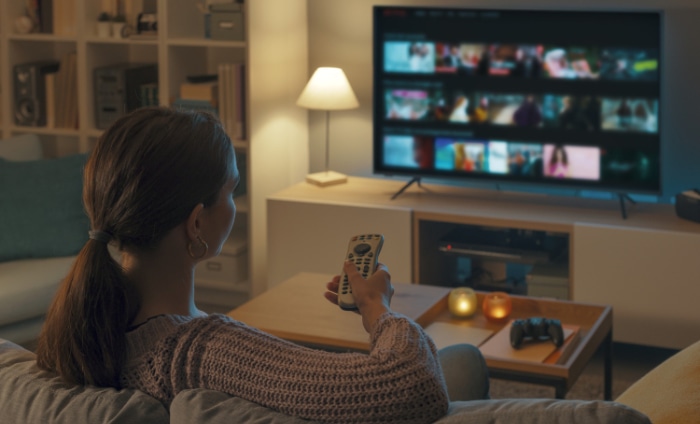NanoCell vs. OLED: A Comprehensive Comparison

Finding the perfect TV for your home often comes down to choosing between cutting-edge display technologies. NanoCell and OLED are two strong contenders, each offering unique benefits that appeal to different types of viewers.
NanoCell is all about delivering sharp colors and bright visuals at a more accessible price point, while OLED takes home entertainment to the next level with its ability to produce lifelike contrast and perfect blacks.
Core Technology and Design
Television displays have come a long way, offering cutting-edge technologies tailored for different viewing experiences. Two popular options that stand out in today’s market are OLED and NanoCell, each utilizing distinct methods to produce high-quality visuals.
OLED
OLED, short for Organic Light-Emitting Diode, is a display technology where each pixel generates its own light. This eliminates the need for a backlight system, resulting in remarkable levels of contrast and color reproduction.
Because OLED pixels can completely turn off when displaying black, it creates a true black level that enhances overall image depth and realism in dark scenes. This self-emissive property also allows for thin construction, with some designs being as slim as 4 millimeters.
Another advantage of OLED panels is their flexibility in design. Without bulky backlight layers, manufacturers can produce ultra-thin screens with minimal bezels and even curved or foldable structures.
However, this construction also makes OLED screens more expensive to produce, often placing them in the premium segment of the market. Despite this, their ability to deliver superior picture quality and a lightweight design makes OLED displays a favorite for those seeking high-performance televisions.
NanoCell
NanoCell technology, developed by LG, is built upon traditional LCD principles but incorporates a unique twist to improve color accuracy. At its core is a layer of nanoparticles designed to absorb unwanted wavelengths of light and enhance color purity.
This makes NanoCell displays capable of vibrant and consistent colors, which are particularly noticeable when watching high-definition and HDR content. Unlike OLED’s self-emissive design, NanoCell relies on an LED backlight to illuminate its pixels, which is why it tends to have a thicker physical construction, typically between 35 and 45 millimeters.
NanoCell panels frequently use IPS (In-Plane Switching) technology, which significantly improves viewing angles compared to standard LCDs. This makes them well-suited for family rooms or environments where viewers are positioned at variable angles.
However, the reliance on a backlight system means NanoCell displays cannot achieve the same level of black depth as OLED. Black areas often appear slightly gray when viewed in darker settings, though this is less noticeable in brightly lit rooms.
Performance Comparison

The quality of a television display is often judged by its performance in several critical areas, including contrast, brightness, motion handling, and viewing angles. OLED and NanoCell differ significantly in these aspects due to their distinct technologies, catering to varying preferences and environments.
Contrast and Black Levels
Contrast is one of the most important aspects of picture quality, as it directly impacts how vivid and lifelike content appears. OLED excels in this department thanks to its ability to individually control each pixel’s light emission.
When a pixel is turned off, it produces perfect black levels, creating infinite contrast ratios that dramatically enhance the depth of darker scenes. This ability to achieve true blacks is especially advantageous when watching movies or shows in dimly lit rooms, as it ensures every shadow and detail stands out.
NanoCell relies on a backlight system to illuminate its pixels, which limits its ability to produce black levels as deep and precise as OLED. Instead of true blacks, dark areas in NanoCell screens often appear slightly gray, particularly in low-light environments.
However, NanoCell performs well in brightly lit spaces, where the difference in black levels is less noticeable. For viewers who prioritize contrast for cinematic or atmospheric experiences, OLED remains the superior choice.
Brightness and HDR
Brightness capabilities differ significantly between OLED and NanoCell panels. NanoCell tends to deliver higher peak brightness due to its LED backlight system, making it well-suited for brightly lit rooms or daytime TV viewing.
Increased brightness can also enhance HDR (High Dynamic Range) effects by making highlights in HDR content more prominent, which is especially beneficial when watching shows or sports in environments with ambient light.
OLED, while not as bright as NanoCell, compensates with its precision in rendering HDR content. Each OLED pixel independently adjusts its brightness, resulting in a wider dynamic range and more realistic light and shadow detail in HDR scenes.
This level of detail ensures that HDR effects look stunning in darker rooms, bringing out every nuance in high-quality video. For those who prioritize brightness over HDR precision, NanoCell is a logical choice, while OLED appeals to viewers seeking enhanced HDR realism.
Motion and Responsiveness
Fast-paced content, such as action-packed movies or competitive gaming, demands displays that can handle motion efficiently without noticeable lag or blurring. OLED displays have an edge here with lightning-fast response times of less than 2 milliseconds.
This quick responsiveness keeps motion sharp and clear, reducing blurring and ghosting in fast-moving scenes. Gamers, particularly those playing fast-paced games, can benefit from OLED’s ability to provide smooth transitions and reduce input lag.
NanoCell screens, while not as responsive as OLED, perform respectably with response times between 5 and 10 milliseconds. These speeds are sufficient for casual viewing but may not meet the demands of highly competitive gamers or viewers sensitive to motion artifacts.
For gaming enthusiasts and those who value fluid motion clarity, OLED remains the standout option.
Viewing Angles
When multiple viewers are watching from different parts of the room, maintaining consistent picture quality across various angles becomes a significant consideration. OLED panels deliver consistent colors and contrast up to wide viewing angles of around 60 degrees or more, ensuring that everyone in the room enjoys the same high-quality image regardless of their position.
This makes OLED an excellent choice for large rooms or spaces where the seating arrangement is spread out.
NanoCell, enhanced by its IPS panel technology, offers better viewing angles than standard LCDs, but it still falls short of OLED. Beyond approximately 30 degrees, NanoCell screens may experience noticeable color shifts and reductions in contrast.
While perfectly adequate for smaller setups or scenarios where seating is more centralized, NanoCell is less ideal for situations requiring optimal picture quality from extreme angles. For family movie nights or gatherings, OLED’s superior viewing angle performance offers a more immersive experience.
Practical Considerations

Choosing between OLED and NanoCell often comes down to practical factors that extend beyond performance specifications. Cost, durability, and suitability for specific use cases are critical points to consider, as they directly affect the overall value and satisfaction a television can provide.
Price and Affordability
Budget often plays a major role in TV selection, and OLED and NanoCell cater to vastly different market segments. OLED televisions are priced as premium products, often costing nearly twice as much as their NanoCell counterparts.
The extra cost reflects the advanced technology behind OLED’s self-emissive pixels, ultra-thin design, and exceptional picture quality. OLED displays are targeted at buyers who prioritize top-tier performance and are willing to invest in a high-end home entertainment experience.
NanoCell televisions, on the other hand, offer a more budget-friendly alternative. Positioned in the mid-range category, NanoCell appeals to viewers seeking reliable quality without stretching their finances.
While it cannot match OLED’s finesse in areas like black levels and HDR precision, NanoCell provides solid picture quality and features at a fraction of the cost. Buyers on tighter budgets or those looking for a well-rounded TV for casual use often favor NanoCell for its affordability.
Durability and Longevity
Durability is another crucial factor when selecting a television, particularly for households where screens are often used for extended periods or display static content like menus or logos. OLED panels are prone to a phenomenon known as burn-in, where static images can leave faint, permanent marks on the screen over time.
Manufacturers have taken steps to minimize this risk through features like pixel-shifting and automatic screen refresh cycles, but burn-in remains a potential concern for heavy users.
NanoCell displays, due to their reliance on LED-backlit LCD technology, do not suffer from burn-in issues. The design ensures that the screen remains free from permanent image retention, even after prolonged exposure to static visuals.
NanoCell’s durability makes it a safer choice for families, shared spaces, or users who plan to use their TV for a mix of streaming, gaming, and traditional programming without worrying about burn-in effects.
Use Case Scenarios
OLED and NanoCell suit different environments and viewing habits, making it essential to match the technology to specific use cases. OLED is an excellent choice for dim or dark settings, where its ability to produce perfect blacks and infinite contrast truly shines.
Movie enthusiasts will appreciate the immersive experience it delivers, along with its fast response times, which make it ideal for competitive gaming and fast-paced action scenes. For users seeking the ultimate cinematic or gaming performance, OLED is hard to beat.
NanoCell works better in bright settings, such as living rooms with ample natural light or spaces with artificial lighting. Its higher brightness levels and solid HDR performance ensure that content remains clear and vivid, even with varying light conditions.
The wide viewing angles offered by its IPS panels also make NanoCell preferable for casual TV use in shared spaces, where viewers might be sitting at different positions. For families or users who need an all-purpose television that performs well across multiple scenarios, NanoCell is a practical and versatile choice.
Key Decision Factors

When comparing OLED and NanoCell televisions, several factors come into play that often influence the final decision. Budget, content preferences, and physical design requirements are among the most important considerations for prospective buyers.
Budget Constraints
For many shoppers, price is one of the most significant deciding factors when selecting a television. OLED televisions sit firmly in the premium category, offering cutting-edge technology such as self-emissive pixels, unmatched black levels, and sleek designs.
The superior performance and innovative features come at a substantially higher cost, often making OLED twice as expensive as its NanoCell counterparts. Buyers willing to invest in top-tier quality and functionality often gravitate toward OLED for its unparalleled viewing experience.
NanoCell, on the other hand, is much more budget-friendly and caters to the mid-range market. While it lacks the advanced contrast capabilities and slim profiles of OLED, it delivers reliable performance at a considerably lower price point.
NanoCell televisions are ideal for those who want a quality display without exceeding financial limits. For shoppers with budget constraints or those looking for everyday reliability, NanoCell offers great value and practicality.
Content Preferences
The type of content a television is intended to display plays a vital role in determining the best technology for a particular user. OLED is well-suited for watching 4K films, high-contrast media, and visually demanding content.
Its ability to deliver perfect black levels and infinite contrast makes cinematic experiences incredibly immersive, bringing out every shadow, highlight, and detail. Gamers also benefit from OLED’s fast response times, which ensure smooth motion and minimal lag, making it a preferred option for competitive gaming.
NanoCell performs admirably across a broader range of viewing scenarios, especially in rooms with abundant natural or artificial light. The higher brightness levels and solid HDR capabilities make NanoCell better equipped for daytime viewing, maintaining vivid colors and clarity even in challenging lighting conditions.
Viewers who consume a mix of genres, including HDR-enhanced shows or casual programming, find NanoCell versatile and satisfying for regular use. Matching the television to the preferred content type is essential when selecting between OLED and NanoCell.
Aesthetic and Space Requirements
The physical design of a television can be just as important as its internal capabilities, particularly for buyers who are mindful of their living space or prefer a specific aesthetic. OLED televisions are renowned for their ultra-thin construction, often as slim as just a few millimeters.
Their lightweight design and frameless look make them ideal for wall-mounted setups, offering a sleek and modern appearance that complements contemporary interiors. OLED screens are also more adaptable for unique installations, such as curved or flexible displays, lending additional visual appeal.
NanoCell televisions, due to their LED backlight layers, are bulkier in comparison. While typically measuring 35 to 45 millimeters in thickness, NanoCell displays are still manageable for most setups and offer versatile placement options, such as on stands or entertainment centers.
For those who prioritize design minimalism or have limited wall space, OLED provides the edge, but NanoCell remains a practical choice for traditional viewing arrangements in larger areas. Balancing aesthetics and practicality is key when considering the right television design for a given space.
Conclusion
Choosing between OLED and NanoCell ultimately depends on individual preferences, priorities, and circumstances. OLED stands out as the leader in picture quality, offering perfect blacks, limitless contrast, and exceptional responsiveness.
Its ability to handle cinematic content and competitive gaming with outstanding precision makes it a premium option for those seeking top-tier performance in darker environments or for immersive, high-quality viewing. However, this cutting-edge technology comes with a higher price tag, which might not fit every budget.
NanoCell, while not as advanced in contrast or motion handling, shines in its affordability and versatility. It performs well in brighter rooms, thanks to its superior brightness levels, and is an excellent choice for casual viewing or mixed-use scenarios.
With vibrant colors and wide viewing angles, it provides plenty of value for those not requiring the refined contrast and HDR precision of OLED.
For viewers with a flexible budget and a focus on cinematic experiences or competitive gaming, OLED is the clear winner. For those looking for a more budget-conscious, versatile solution tailored for bright environments and varied content, NanoCell delivers a practical and reliable alternative.
Matching the technology to your viewing habits, room conditions, and budget ensures a satisfying experience regardless of which option you choose.


